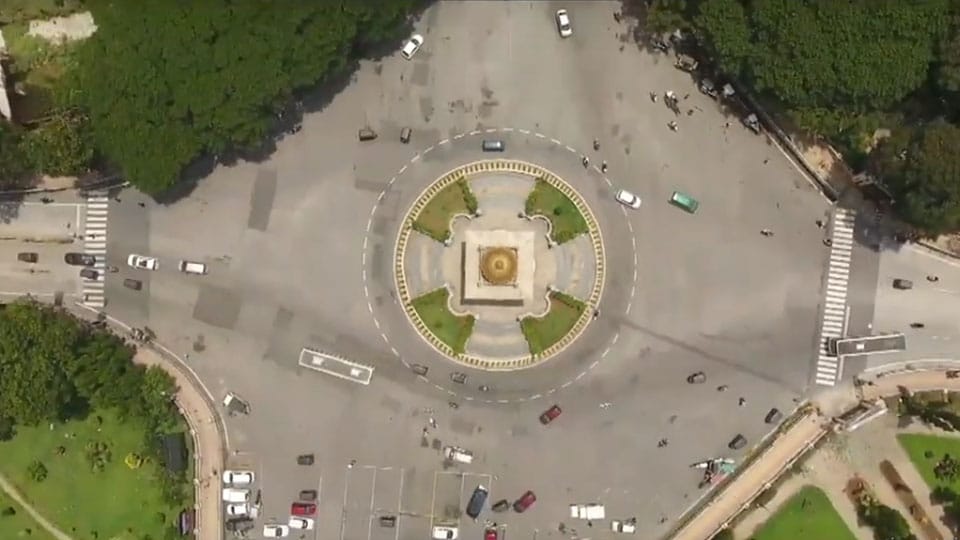Pages of history track the rule by Wadiyars of Mysore spanning nearly five centuries, coming to an end in 1947 with the near-fifty-year rule of Nalwadi Krishnaraja Wadiyar (1884-1949) being universally accepted as the most glorious on the count of providing governance marked by welfare of all sections of society as the central agenda. The illustrious monarch immortalised himself by virtue of setting hard-to-emulate standards of statesmanship throughout his short life. The land hosted a few statesmen of a different class during the initial years following the birth of democracy, most of them commanding unalloyed respect from people in all walks of society. Given the current national scene dominated by vote-seeking wannabe rulers with their distasteful conduct, one is prompted to cite the verdict of the classical Greek philosopher Socrates (470-399 BC), teacher of Plato (428-348 BC), as being highly critical of democracy and proposing an aristocracy ruled by philosopher-kings. Nalwadi Krishnaraja Wadiyar, known for his erudition, amply vindicated the view of Socrates to the extent that would please the latter’s soul.
The country’s various institutions, all of them trusted by the people as guaranteed safeguards against unedifying conduct of their elected representatives in public life have witnessed a bewildering breakdown, forcing the knowledgeable among the literati to lament that the once mighty Election Commission of India as spineless witness to the atrocious ways of Indians seeking election as members of the democratic institutions. The election of people’s representatives, as members of the country’s 17th parliament is to conclude on May 23rd, the day set for counting of votes. Readers of dailies and viewers of television news channels, after soaking themselves with the none-too-pleasing rhetoric of the more than 8,000 candidates seeking the favour of voters during the weeks of campaigns, are now awaiting the poll outcome with bated breath, hoping that all will be well in the democracy during the years ahead. They are annoyed, more than getting amused, by the free-flowing hate-filled utterances of the vociferous vote-seekers, but with limited options of their choice of representatives.
Even as common people, barely surviving the din and dust generated during the weeks of polling are hoping that their needs of life would be met by whichever party or coalition grabs the perch of the country’s government, the literati does not seem to hope for emergence of any statesman among the elected lot.








Editor Says: Pages of history track the rule by Wadiyars of Mysore spanning nearly five centuries, coming to an end in 1947 with the near-fifty-year rule of Nalwadi Krishnaraja Wadiyar (1884-1949) being universally accepted as the most glorious on the count of providing governance marked by welfare of all sections of society as the central agenda.
I wonder what was intent of the Editor while saying naer fifty year rule of KRW IV and providing in parenthesis 1884-1849. No doubt KRW IV was born in 1884. Though he ascended the throne in 1895, his actual rule started only in 1902 after he attained majority. He died in 1940. Thus heis rule lasted 38 years. May be 1949 was an error !
Editor also says Wadiyar’s reign ended in 1947. This is also a misconception. Accession to Indian dominion post 15-8-1947 and /or formation of so called Responsible Government in Oct 1947 did not end Wadiyar’s Reign. Accession did not end the Sovereignty of the Mysore as a Kingdom ( Read S-8 of IA https://en.wikipedia.org/wiki/Instrument_of_Accession). Neither did the formation of Responsible Government end the reign of King as a Sovereign head. It was just an interim arrangement where in council of Ministers was expanded totally consisting of Members of existing elected representatives but Dewan still acting as a Bridge between the King and the Council . This interim arrangement was intended to last till a Constitution for Mysore was drafted by an elected constituent assembly. But this constituent assembly of Mysore recommended to the King to adopt the Constitution of India as drafted by the constituent assembly of India. Thus on 25-11-1949 , Maharaja issued a proclamation adopting the Constitution of India and thus became a Part-B state when India became a Republic. Thus one can legally state Wadiyars Rule lasted till 26-11-1949 / 26-1-1950.